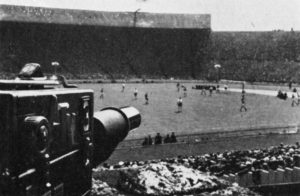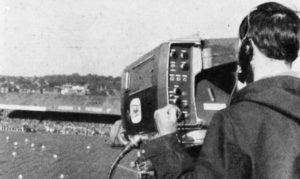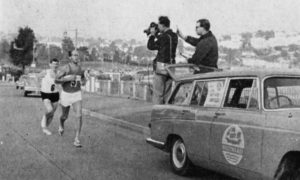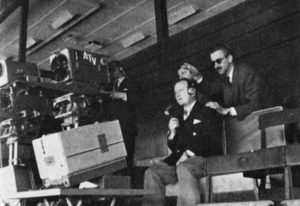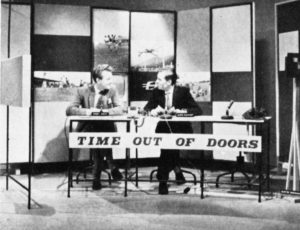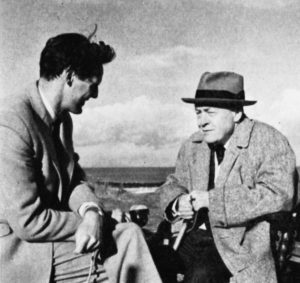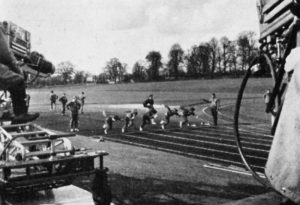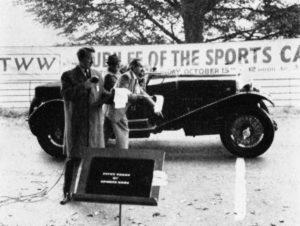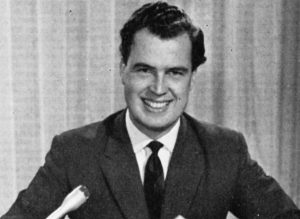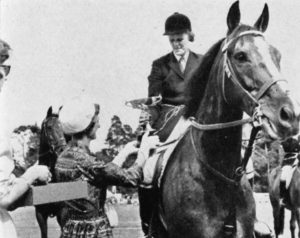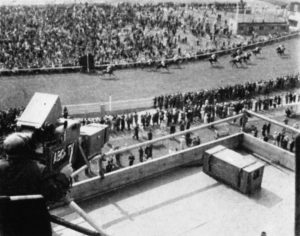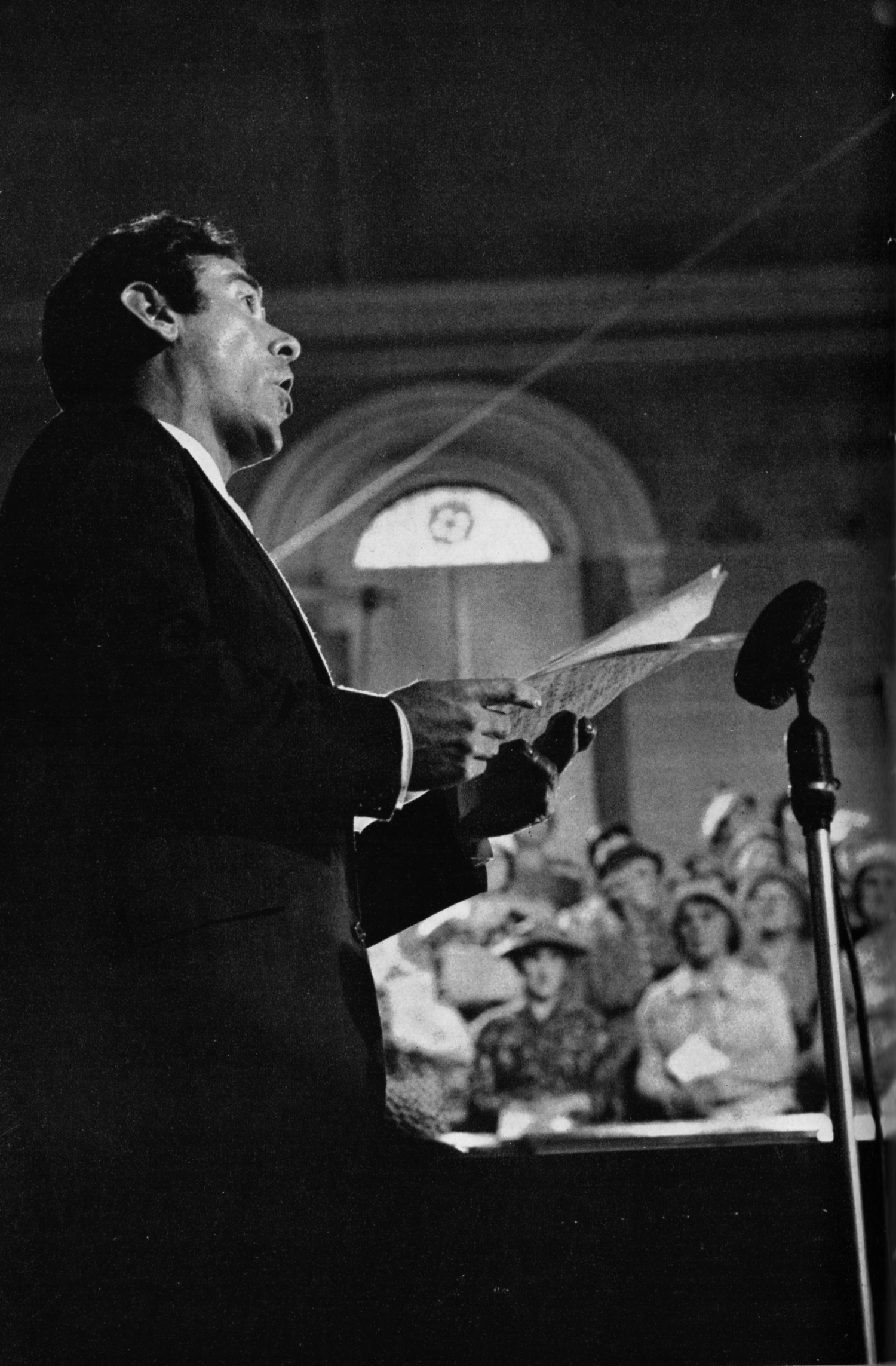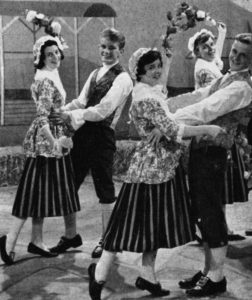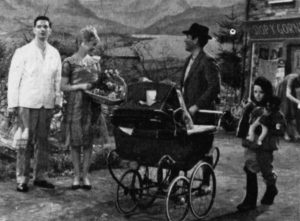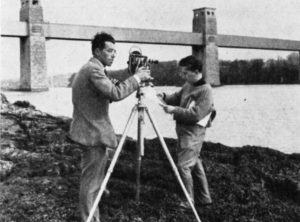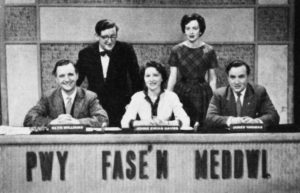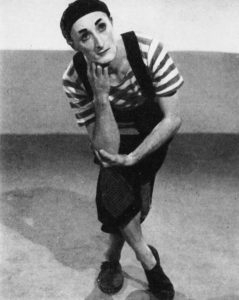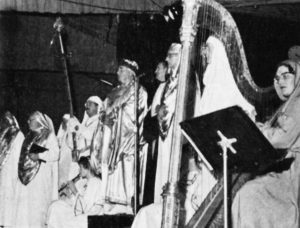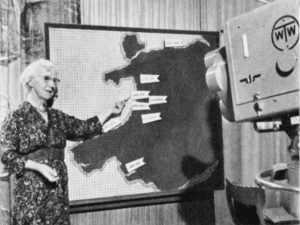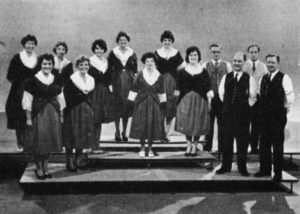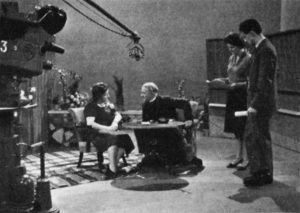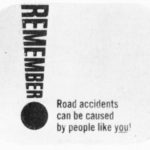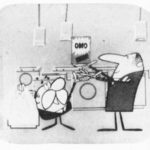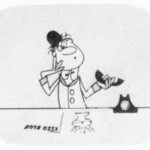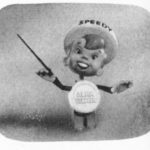
Independent Television provides an extensive and varied coverage of sports events of all kinds. Every Saturday afternoon throughout the year is devoted to the transmission of live sports programmes. Weekday transmissions, both afternoon and evening, present many outstanding sports occasions. In addition, nearly all the programme companies produce sports magazines of particular interest in their own localities.
Preparing a Sports Outside Broadcast
A wide range of technical skills and resources is required to provide effective outside broadcasts. The operation is often far more complicated than many productions in the television studio. It involves the problems of sending pictures back from the location of the outside broadcast to the central pick-up point, using carefully-planned paths of portable relays sited at various places. Over the years ITV communication engineers have amassed an extensive knowledge and experience which places them among the world’s experts in sending a high-quality signal from almost anywhere.
Cameras have to be sited to give the best possible view which, as often as not, requires the erection of complex scaffolding. Indoor locations have to be lit, again requiring special techniques to obtain good pictures without interfering with the event.
A mobile control room, or sometimes more than one, is brought to the site with full facilities to control four or more cameras and associated sound. Sometimes power has to be supplied from portable generators. Special telephone lines are arranged to carry sound instructions to and from the companies’ central control, and
any special information such as betting odds for horse racing. An accurate analysis of every O.B. must be made for the commentator who has to be “in the-know” on every detail.
The Outside Broadcast man regards the world, sporting and otherwise, as the viewer’s oyster and he uses a pretty complicated lever to open it.
Saturday Afternoon Sport
Between three and four hours of fully networked programmes are supplied jointly by ATV and ABC each Saturday afternoon, often with the collaboration of another regional company. Thus, on a recent Saturday afternoon, sport was covered as follows:
| 1.20 | Steeplechasing from Catterick | ABC |
| 1.40 | Tenpin Bowling Tournament from Leeds | ABC |
| 1.50 | Steeplechasing | ABC |
| 2.10 | Tenpin Bowling | ABC |
| 2.30 | Snooker from London | ATV |
| 2.50 | Steeplechasing | ABC |
| 3.10 | Amateur Boxing from Bishop Auckland, Co. Durham | Tyne Tees |
| 3.40 | Racing Results Round-Up | ATV |
| 3.45 | Snooker | ATV |
| 4.05 | Professional Wrestling from Kingston-upon-Thames | ATV |
| 4.50 | Full Soccer Results | ATV |
During this particular afternoon, five different sports were covered live by three different companies, Tyne Tees’s coverage of boxing being integrated with the overall ABC ATV schedule. Thus five complete outside broadcast units, each with several cameras and its own mobile control room, were employed to provide this typical afternoon’s sports coverage.
Sports covered on Saturday afternoons include Athletics; Badminton; Bowling (Ten-Pin); Bowls; Boxing; Cricket; Go-Karting; Golf; Greyhound Racing; Gymkhanas; Gymnastics; Horse Racing; Ice Skating; Indoor Tennis; Lawn Tennis; Motor Cycle Scrambles; Motor Cycling; Motor Racing; Polo; Rugger; Sailing; Show Jumping; Snooker; Soccer; Swimming; Table Tennis; Wrestling.
Other Live Sport
Apart from the regular and extensive coverage of sport on Saturday afternoons, a wide range of sporting events is presented at other times. January, February and March see Racing from Sandown Park and Catter-ick Bridge, League Football and Professional Boxing; the second quarter, while including sport of all kinds, contains the Royal Windsor Horse Show and Wimbledon; in the third quarter Wimbledon is followed by professional tennis, and cricket is fully covered along with golf and polo; from October till the New Year racing and boxing predominate.
The following are a few of the special broadcasts during 1962 other than the regular Saturday afternoon coverage:
- January 12th: Racing — Sandown Park
- March 21st: Football League v. Scottish League
- April 3rd: Upton Horse Trials
- April 24th: Professional Boxing—Prescott v. Daniels
- May 1st: Racing — Newmarket
- May 9th: Football—England v. Switzerland
- May 10th/11th: Royal Windsor Horse Show
- May 24th: Cricket—Sussex v. Pakistan
- June 11th: Whit Monday Sport—Motor Racing from Goodwood, Racing from Redcar, Polo from Windsor Great Park
- June 25th-July 6th: 1962 Lawn Tennis Championships from Wimbledon
- August 6th: Bank Holiday Sport—Racing from Epsom, County Cricket (Lancashire v. Yorkshire), Polo from Windsor Great Park
- August 16th: Polo from Ham
- August 17th: International Boys’ Golf from Richmond
- September 17th-21st: 1962 Professional Indoor Tennis Championships from Wembley Empire Pool
- October 10th/11th: York Races
Other sports included greyhound racing, badminton, table tennis, motor racing, motor cycling, go-karting, bowls, rugger, swimming and basketball.
The majority of all live sports programmes on weekdays are supplied on a full or partial network basis by Associated-Rediffusion and Granada. From time to time, however, other companies — notably ATV, ABC, Southern, Tyne Tees and TWW — produce local sports programmes, some of which are networked. A-R’s presentation of the football match between Tottenham Hotspurs and the Portuguese team Benfica was not only fully networked but was also seen in France, Germany, Belgium, Italy, Luxembourg, Holland, Switzerland, Portugal and Spain by means of a Eurovision link. ATV’s presentation of the European Heavyweight Championship fight from Gothenburg was seen by other countries on Eurovision.
Recorded Sport
Direct Eurovision links are not always available or convenient for the transmission of sporting events between Britain and Europe. On such occasions recordings are made for transmission during the evening of the same day or as soon afterwards as is practicable. In this way British viewers were able to see highlights from the Monte Carlo Rally in January and European viewers were able to see programmes from Wimbledon in June and July.
Sports Magazines
Most of the programme companies produce their own sports magazines designed to appeal particularly to the viewers in their local transmission areas. These programmes are either weekly or twice-weekly, and the local approach varies considerably. A few are networked to adjoining areas, but most are only transmitted locally.
Children’s Sport
ATV’s weekly programme Seeing Sport transmitted at 5 p.m. on Mondays and fully networked, is designed to introduce children and young people to the skills and techniques of different types of sport. It is one of the longest-established children’s programmes and has been running weekly since June 1956. Over 30 different sports have been covered. The “Seeing Sport Trophy” is awarded annually to the group of young people who have shown the most initiative in the development of their own sporting facilities. Other children’s programmes deal with various aspects of sport from time to time.
REGULAR SPORTS PROGRAMMES
| Programme | Description | Company | Mins. | Time & day | Distribution |
|---|---|---|---|---|---|
| Saturday Afternoon Sport | Mixed O.B.s | ABC/ATV and regional companies | 220 | 1.20 Saturday | Network |
| Sportscast | Sports magazine | ITN/A-R | 7 | 6.08 Wednesday | Local |
| Your Kind of Sport | Sports feature | ATV | 15 | 6.45 Thursday | Local |
| Sports O.B. | ABC | 45 | 2.00 Sunday | Part Network | |
| Welsh Sportlight | Sports magazine | WWN | 30 | 6.15 Monday | Local |
| Westward Sports Desk | Sports review | Westward | 15 | 6.45 Monday 6.45 Friday | Local Local |
| Scotsport | Sports magazine | Scottish | 30 | 10.30 Wednesday | Part Network |
| 20 | 5.25 Saturday | Local | |||
| 30 | 10.05 Saturday | Part Network | |||
| Sports Preview | Sports magazine | TWW | 30 | 10.45 Thursday | Local |
| Cue for Sport | Sports magazine | Tyne Tees | 30 | 10.15 Friday | Local |
| Sportscope | Sports magazine | Grampian | 15 | 6.45 Friday | Local |
| Full Time | Sports review | Ulster | 15 | 5.00 Saturday | Local |
| Shoot! | Soccer highlights | Tyne Tees | 30 | 11.00 Saturday | Local |
| Match of the Week | Soccer | Anglia | 35 | 10.35 Sunday | Local |
| Time out of Doors | Sports magazine | Border | 30 | 8.30 Monday | Local |
In addition, special sporting events such as Wimbledon and important boxing matches are networked, while regional companies cover important sporting events in their own areas. Associated-Rediffusion, Granada and Tyne Tees Television are the main providers of mid-week racing coverage for the network.


